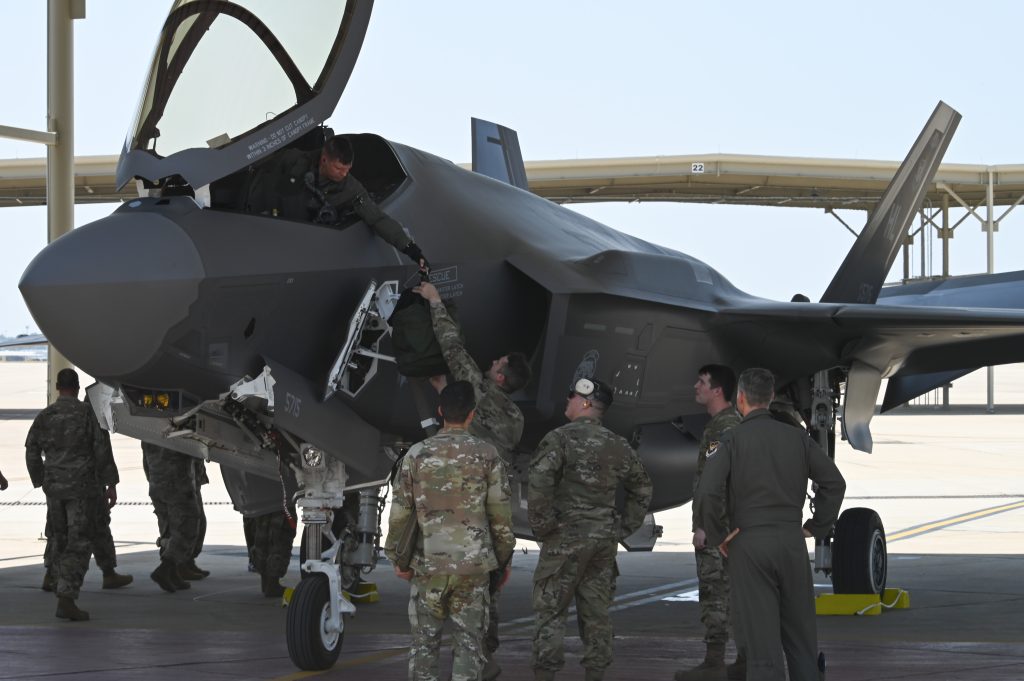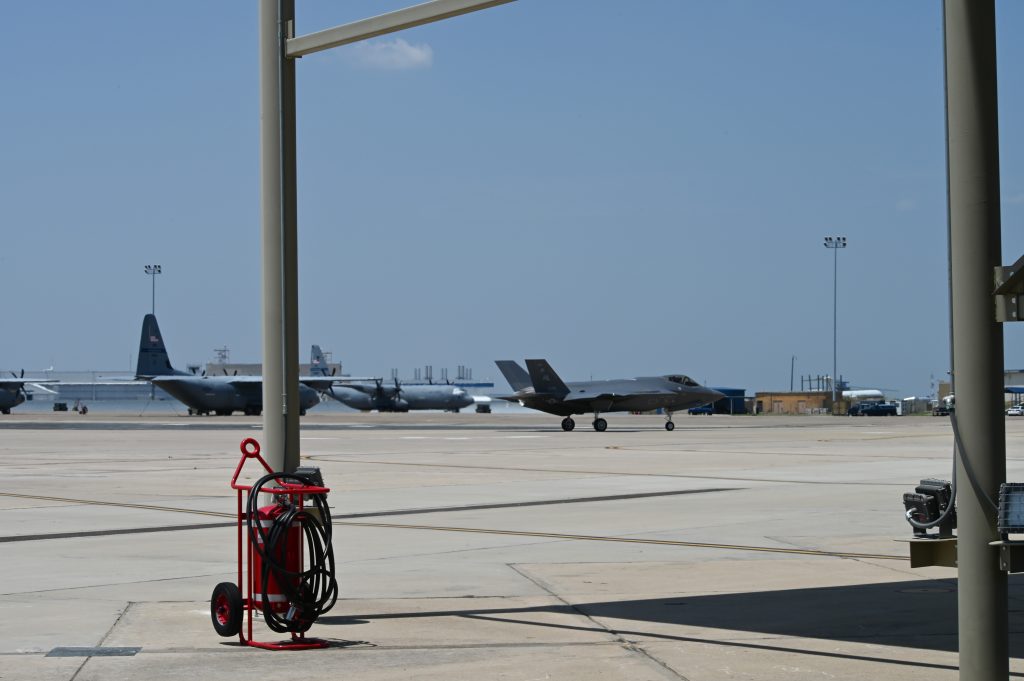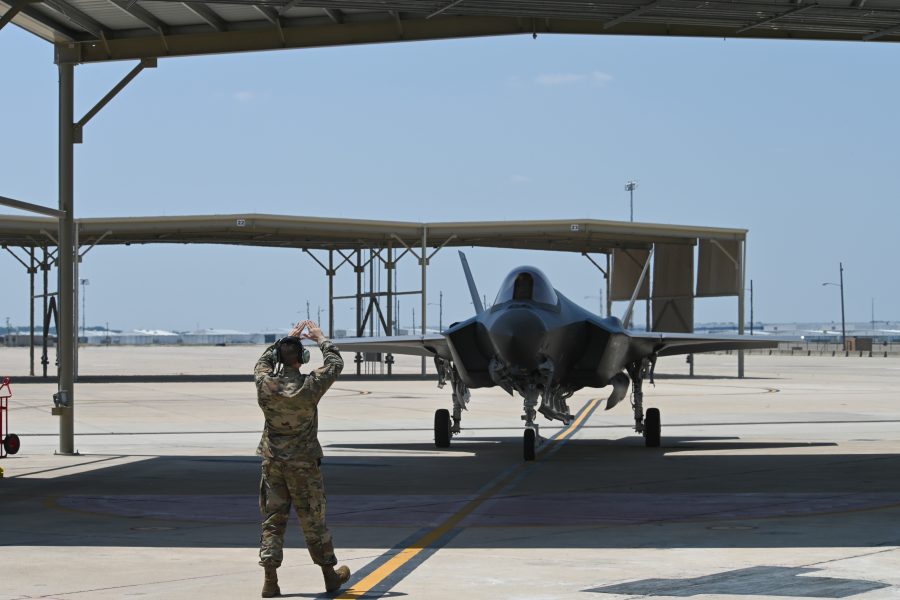Two newly manufactured F-35s touched down at the home of the 301st Fighter Wing in Texas last week, as the wing is transitioning from its F-16 fleet to the fifth-generation aircraft.
But the jets are not there to stay; the F-35s that arrived at Naval Air Station Joint Reserve Base Fort Worth sport “HL” tail codes, as they are assigned to Hill Air Force Base, Utah.
“These brand new jets have not been to Hill yet, but they will eventually head there,” a spokesperson for the 301st Fighter Wing told Air & Space Forces Magazine, adding that the aircraft are scheduled to make their way there by the end of the year. “We’re temporarily using these fighters until then.”
Previously, 301st Wing and Air Force Reserve Command officials said they were expecting the wing to receive first F-35 deliveries by this summer. Now, however, the Texan base is expecting the first delivery of their own stealth fighters in November. The wing is still poised to be the Air Force Reserve’s first standalone F-35 unit, with a total of 26 aircraft.

“As of now, the plan is to hold the official FAA (first aircraft arrival) ceremony in November this year,” the spokesperson added. “We will be receiving additional aircraft from Lockheed Martin over the next 12 to 15 months.”
Lockheed has been scrambling to up its rate of F-35 deliveries to units after having to store newly built jets for nearly a year due to incomplete software testing. Deliveries only resumed last month, and the long hold disrupted absorption and equipage plans among users, who could not efficiently train new pilots and maintainers of the fighter.
The Government Accountability Office has warned that the contractor will face a tall order in clearing the backlog.
The 301st Fighter Wing declined to comment on whether the temporary stationing of Hill F-35s at the Texan base was due to Lockheed’s delivery hold. The company has said fighters are now being distributed using a “phased” approach, with the U.S. jets delivered first as they complete the “airworthiness process,” with international deliveries to follow.

The 301st spokesperson did say pilots will benefit from early training with the two F-35s. It will also ensure “a smooth transition” as the wing integrates the new aircraft into its operations, replacing their F-16s.
“As we continue to receive aircraft and transition into sustainable operations, we will leverage opportunities to increase all of our Airmen’s F-35 competencies and proficiencies,” Col. Benjamin R. Harrison, 301st Fighter Wing commander, said in a release.
One of the wing’s units, the 457th Expeditionary Fighter Squadron, concluded its final deployment with the F-16s last year from Prince Sultan Air Base, Saudi Arabia. Instead of being retired, the Falcons were redistributed to Nellis Air Force Base, Nev., and Homestead Air Reserve Base, Fla., where they joined the 93rd Fighter Squadron.
“These F-16s have been part of our squadron for almost 30 years and have safely carried [our] pilots through thousands of combat sorties,” Lt. Col. David Snodgrass, commander of the 457th EFS, said in a release. “We intend to carry the strong heritage of F-16 combat prowess forward to the new airplane.”
The wing’s spokesperson noted that there will be some overlap with F-35s assigned to both Hill and the 301st Wing stationed together at the NAS JRB Fort Worth, ensuring the two fighters will stay put at least until November.
